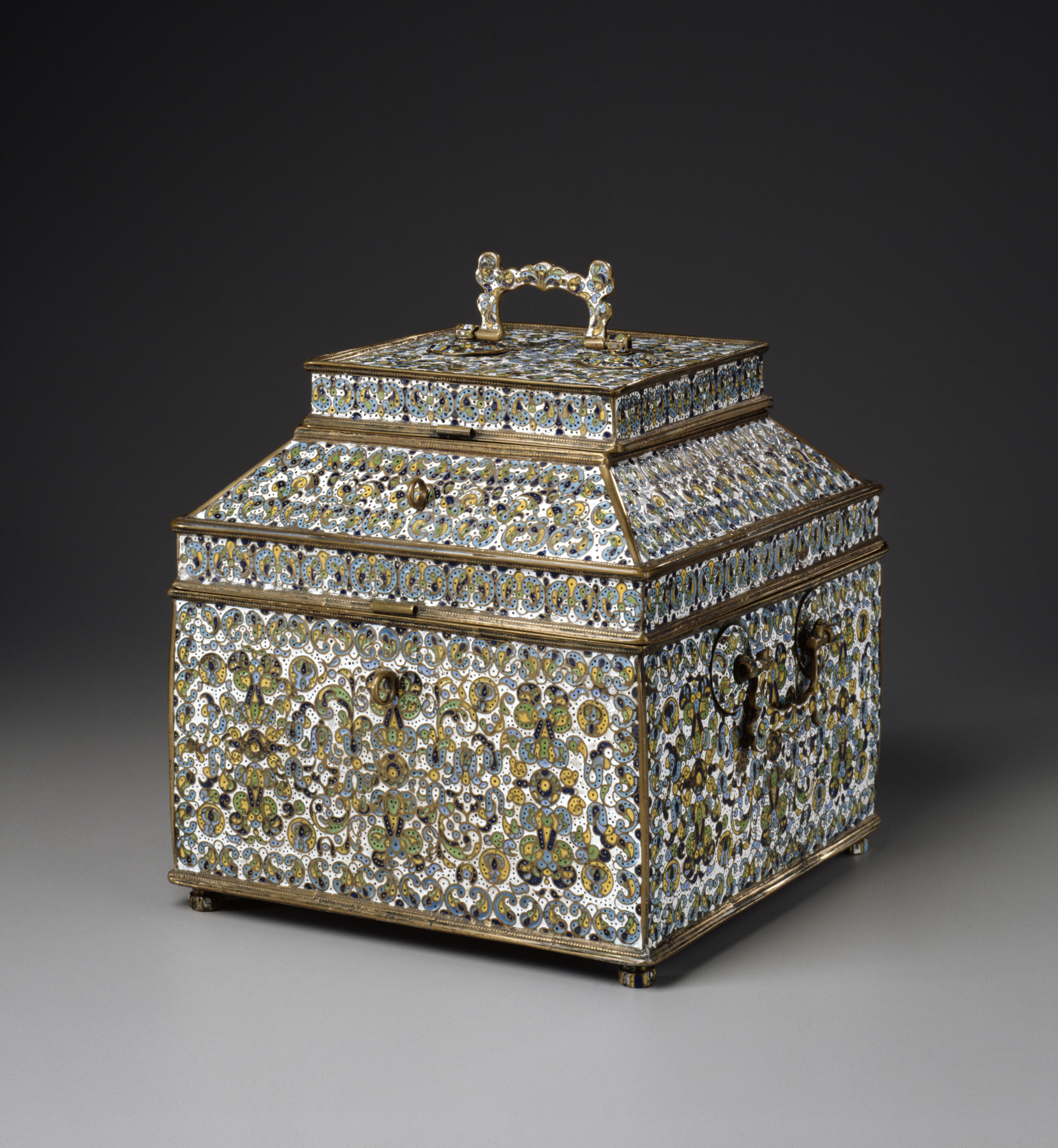Casket
(Baroque Europe )
The earliest Ustiug wares usually involved applying a single layer of enamel (most often colored white, blue, green, or yellow) onto a cast, copper alloy base. This casket is in the form of a "teremok," the upper portion of a house that was set aside for women in Russian noble households during the 16th and 17th centuries.
Probably intended for jewelry, the casket has a large compartment below, and the lid itself contains a compartment; both were probably once fitted with special containers.
Provenance
Provenance (from the French provenir, 'to come from/forth') is the chronology of the ownership, custody, or location of a historical object. Learn more about provenance at the Walters.
Henry Walters, Baltimore [date and mode of acquisition unknown]; Walters Art Museum, 1931, by bequest.
Exhibitions
| 2017-2018 | Fabergé and the Russian Crafts Tradition: An Empire's Legacy . The Walters Art Museum, Baltimore. |
| 1996-1997 | Russian Enamels. The Walters Art Gallery, Baltimore. |
Geographies
Russia, Velikii Ustiug (Place of Origin)
Measurements
Overall H: 10 13/16 × W with handles: 11 9/16 × D: 11 in. (27.5 × 29.4 × 28 cm)
Credit Line
Acquired by Henry Walters
Location in Museum
Not on view
Accession Number
In libraries, galleries, museums, and archives, an accession number is a unique identifier assigned to each object in the collection.
In libraries, galleries, museums, and archives, an accession number is a unique identifier assigned to each object in the collection.
44.237


